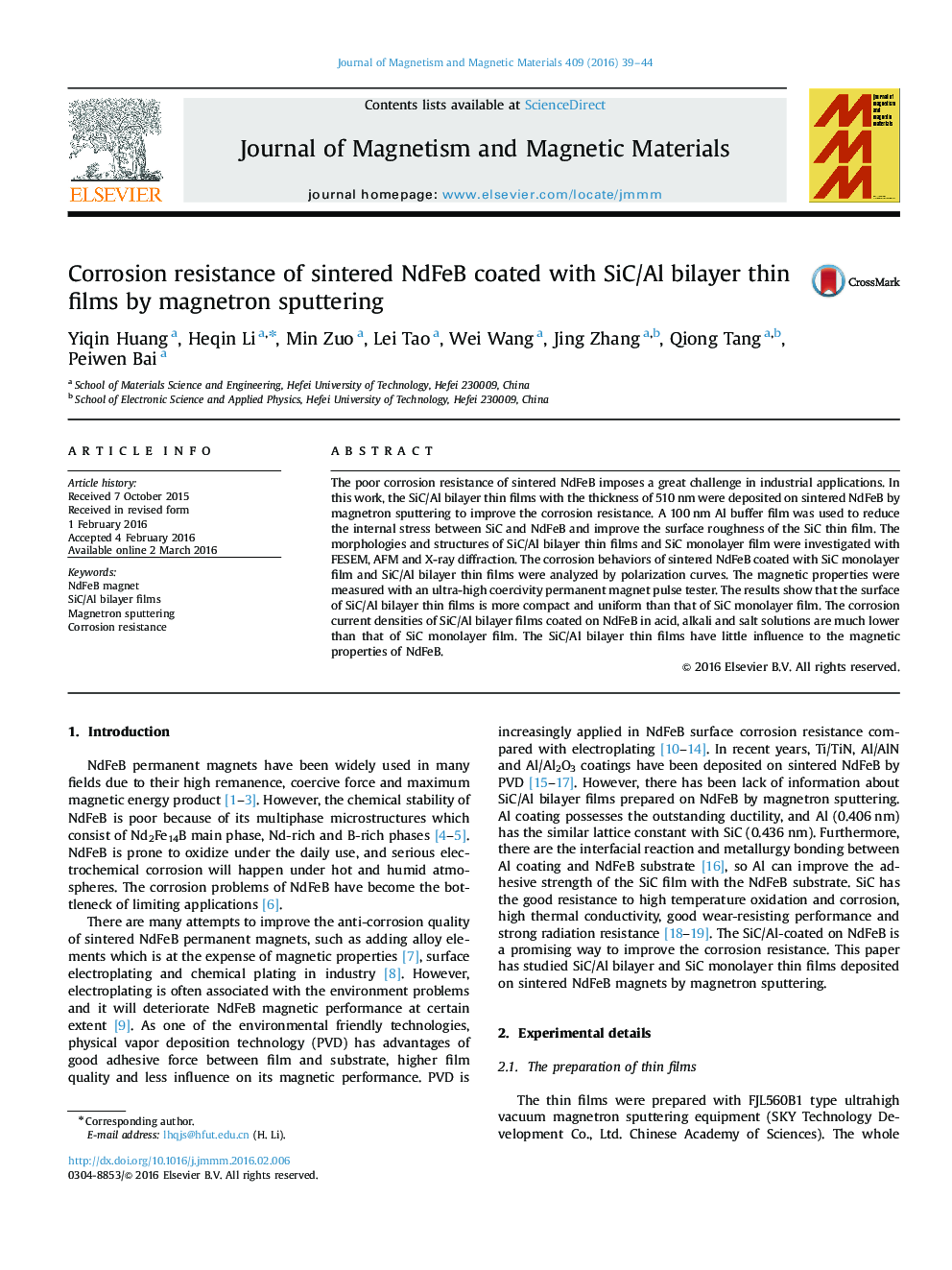| Article ID | Journal | Published Year | Pages | File Type |
|---|---|---|---|---|
| 1798134 | Journal of Magnetism and Magnetic Materials | 2016 | 6 Pages |
•The same thick Al, SiC and SiC/Al films are deposited on NdFeB by magnetron sputtering.•510 nm SiC/Al bilayer films can improve the corrosion resistance of the NdFeB evidently.•Al buffer layer improves effectively the surface roughness of the SiC thin film.•SiC/Al bilayer films do not deteriorate the magnetic properties of NdFeB.
The poor corrosion resistance of sintered NdFeB imposes a great challenge in industrial applications. In this work, the SiC/Al bilayer thin films with the thickness of 510 nm were deposited on sintered NdFeB by magnetron sputtering to improve the corrosion resistance. A 100 nm Al buffer film was used to reduce the internal stress between SiC and NdFeB and improve the surface roughness of the SiC thin film. The morphologies and structures of SiC/Al bilayer thin films and SiC monolayer film were investigated with FESEM, AFM and X-ray diffraction. The corrosion behaviors of sintered NdFeB coated with SiC monolayer film and SiC/Al bilayer thin films were analyzed by polarization curves. The magnetic properties were measured with an ultra-high coercivity permanent magnet pulse tester. The results show that the surface of SiC/Al bilayer thin films is more compact and uniform than that of SiC monolayer film. The corrosion current densities of SiC/Al bilayer films coated on NdFeB in acid, alkali and salt solutions are much lower than that of SiC monolayer film. The SiC/Al bilayer thin films have little influence to the magnetic properties of NdFeB.
